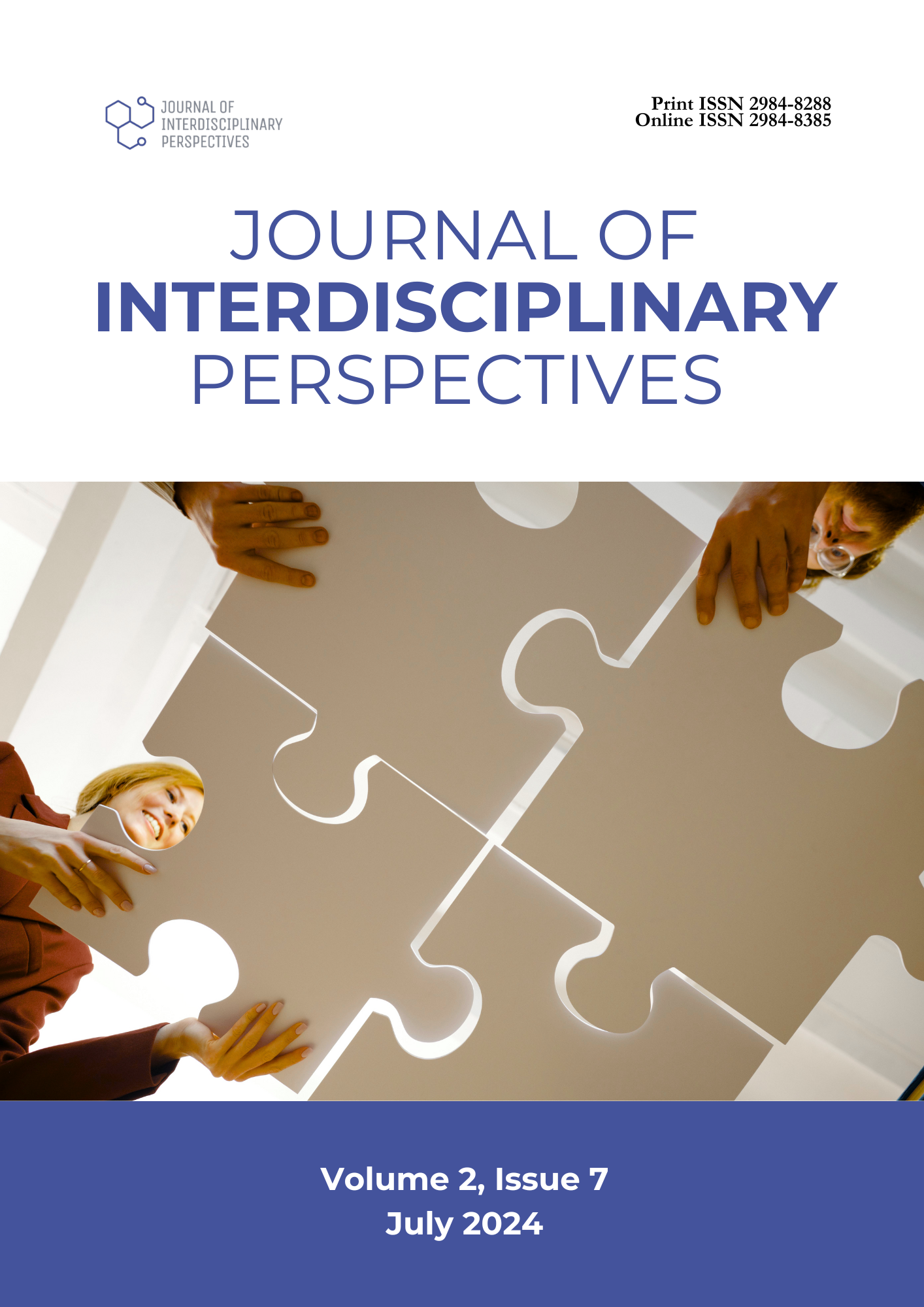Looking at Tuberculosis Through the Lens of the Vulnerable Population in Parañaque City
DOI:
https://doi.org/10.69569/jip.2024.0101Keywords:
Tuberculosis, Vulnerable population, Community engagement, Public health, Health promotionAbstract
This study aimed to support Tuberculosis (TB) advocacy and demand generation initiatives by documenting the experiences of selected population groups in Parañaque City, Philippines. It explored vulnerable populations' perspectives on tuberculosis, health promotion activities, challenges in maintaining health, and access points to health services and information. Through focus group discussions and key informant interviews, 22 elderly individuals, 18 tricycle drivers, 12 barangay health workers, and two public health nurses participated in the study. The findings highlighted various aspects of TB knowledge and awareness, including identification, risk factors, lifestyle, and treatment. The themes that emerged around understanding TB identification included perceived susceptibility, misconceptions, and treatment approaches. Participants' experiences underscored access to information and services, health-seeking behavior, and emotional responses regarding TB. Challenges identified included household situations, perceived stigma, and discrimination, shedding light on community attitudes. Varying perceptions of healthcare services were noted, with some valuing free services at health centers while others found access challenging. The study also underscores the importance of community TB knowledge, tailored healthcare, stigma reduction, and ensuring access to health programs, particularly for vulnerable groups. Advocacy recommendations include maximizing community-based information sharing through training, developing tailored health education approaches, and enhancing health literacy materials. Furthermore, advocating for flexible healthcare service delivery options, stigma reduction activities, and increased community engagement efforts are crucial. These measures are vital for effective TB control and improving overall community wellbeing, particularly in addressing the unique needs of vulnerable populations.
Downloads
References
Adrews J., Morrow C., & Wood R. (2013). "Modeling the Role of Public Transportation in Sustaining Tuberculosis Transmission in South Africa". Retrieved from https://academic.oup.com/aje/article/177/6/556/160848
Agustin R., Lucero J., & Berba R. (2018). "Evaluation of tuberculosis infection control strategies at the Philippine General Hospital". Department of Medicine - Philippine General Hospital, University of the Philippines Manila
Baker M. et.al. (2008). "Tuberculosis associated with household in a developed country". Retrieved from https://www.jstor.org/stable/40665887
Caraux-Paz, P., Diamantis, S., de Wazières, B., & Gallien, S. (2021). "Tuberculosis in the Elderly". Journal of Clinical Medicine, 10(24), 5888. https://doi.org/10.3390/jcm10245888
Chen X. et.al. (2021). "Tuberculosis-related stigma and its determinants: a cross-sectional study". Retrieved from https://bmcpublichealth.biomedcentral.com/articles/10.1186/s12889-020-10055-2
CDC (2011). “Tuberculosis General Information Fact Sheet”. Retrieved from https://www.cdc.gov/tb/publications/factsheets/general/tb.htm
Delves P. (2022). “Effects of Aging on the Immune System”. Retrieved from https://www.msdmanuals.com/home/immune-disorders/biology-of-the-immune-system/effects-of-aging-on-the-immune-system
DOH (2023). "Frequently Asked Questions on TB". Retrieved from https://ntp.doh.gov.ph/about-tb/faq/
DOH (2020). “2019 Philippines TB joint program review”. First Printing 2020. Retrieved from https://ntp.doh.gov.ph/download/joint-program-review-2019-report/
Du C. et.al (2019). "Effect of ventilation improvement during a tuberculosis outbreak in underventilated university buildings". Retrieved from https://onlinelibrary.wiley.com/doi/full/10.1111/ina.12639
Goldman R. (2023). “Tuberculosis: Risk Factors, Causes, and Prevention”. Retrieved from https://www.everydayhealth.com/tuberculosis/guide/risk-factors-causes-prevention/
Mayo Clinic (2023). “Tuberculosis - risk factors”. Retrieved from https://www.mayoclinic.org/diseases-conditions/tuberculosis/symptoms-causes/syc-20351250
Olmo-Fontánez, A. M., & Turner, J. (2022). “Tuberculosis in an Aging World. Pathogens”. (Basel, Switzerland), 11(10), 1101. https://doi.org/10.3390/pathogens11101101
Olson E. (2018). “Lack of sleep: Can it make you sick?”. Retrieved from https://www.mayoclinic.org/diseases-conditions/insomnia/expert-answers/lack-of-sleep/faq-20057757#:~:text=Certain%20cytokines%20need%20to%20increase,don't%20get%20enough%20sleep.
Park, J., Yoon, J. H., Ki, H. K., Han, K., & Kim, H. (2022). “Lifestyle changes and risk of tuberculosis in patients with type 2 diabetes mellitus: A nationwide cohort study.” Frontiers in Endocrinology, 13, 1009493. https://doi.org/10.3389/fendo.2022.1009493
Putra W. et.al. (2019). "The Implementation of Early Detection in Tuberculosis Contact Investigation to Improve Case Finding". Retrieved from https://www.ncbi.nlm.nih.gov/pmc/articles/PMC7310818/
Reyes K. & Amores JC. (2014). “Barriers of early TB diagnosis among the poor in highly urbanized areas in the Philippines”. Discussion Paper Series No. 2014-18 – March 2014. Philippine Institute of Development Studies
Sangma, Mitul M; Devi, Thounaojam Meera; Sarangthem, Babina1; Keisham, Supriya; Devi, Phurailatpam Madhubala1. Prevalence of Tuberculosis: A study in forensic autopsies. Journal of Medical Society 28(3):p 162-165, Sep–Dec 2014. | DOI: 10.4103/0972-4958.148500
Singh (2023). “World TB Day 2023: These Lifestyle Changes Could Lower Your Risk Of Tuberculosis”. Retrieved from https://www.ndtv.com/health/tuberculosis-these-lifestyle-changes-could-lower-your-risk-of-tuberculosis-3886165
Teeter L. (2011). "Giving TB wheels: Public transportation as a risk factor for tuberculosis transmission". Retrieved from https://www.academia.edu/24447274/Giving_TB_wheels_Public_transportation_as_a_risk_factor_for_tuberculosis_transmission
WHO Philippines (2023). “Delivering patient-centered tuberculosis care during COVID-19 in the Philippines”. Retrieved from https://www.who.int/about/accountability/results/who-results-report-2020-mtr/country-story/2021/philippines#:~:text=In%202020%2C%20there%20was%20an,the%20continuity%20of%20TB%20services.
WHO (2023). “Tuberculosis – key facts”. Retrieved from https://www.who.int/news-room/fact-sheets/detail/tuberculosis#:~:text=Tuberculosis%20(TB)%20is%20an%20infectious,Tuberculosis%20is%20preventable%20and%20curable.
WHO (2018). “WHO housing and health guidelines”/ Retrieved from https://www.ncbi.nlm.nih.gov/books/NBK535289/
Zamudio C., Krapp F., Choi H., Shah L., Ciampi A., Gotuzzo E., Heymann J., Seas C., & Brewer T. (2015). "Public Transportation and Tuberculosis Transmission in a High Incidence Setting". Retrieved from https://www.ncbi.nlm.nih.gov/pmc/articles/PMC4338233/
Zimmerman E., Smith J., Banay R., Kau M., & Garfin A. (2022). "Behavioural barriers and perceived trade-offs to care-seeking for tuberculosis in the Philippines". Retrieved from https://pubmed.ncbi.nlm.nih.gov/33275865/
Downloads
Published
How to Cite
Issue
Section
License
Copyright (c) 2025 Journal of Interdisciplinary Perspectives

This work is licensed under a Creative Commons Attribution-NonCommercial 4.0 International License.









